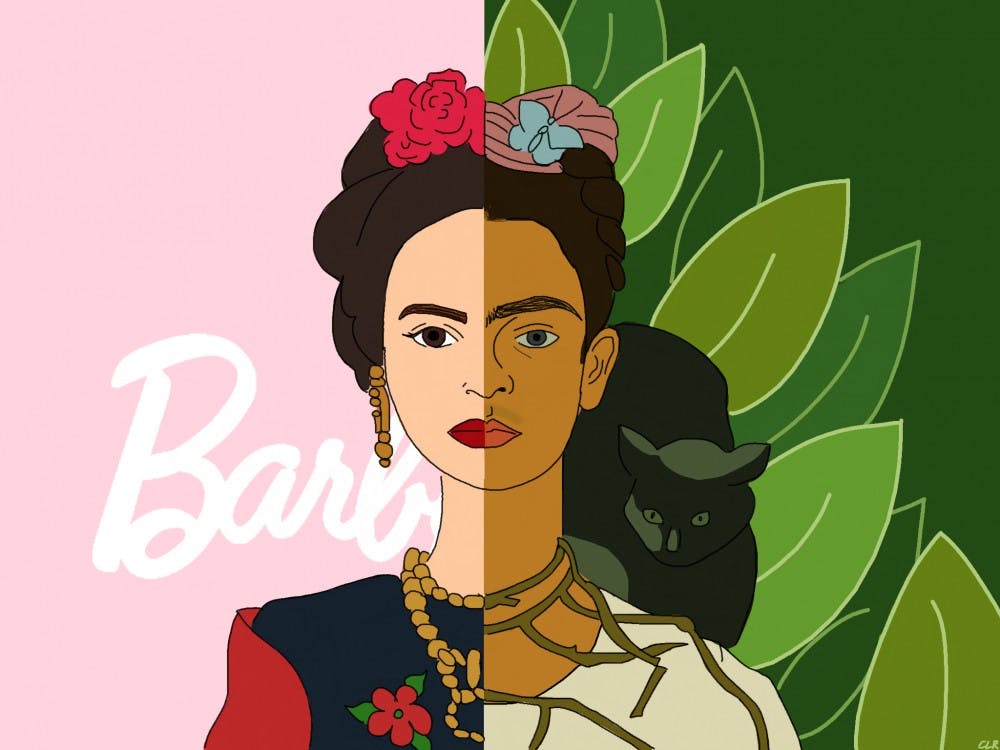Barbie dolls are so much more than plastic toys—they always have been. For decades, they were one of the many standards that society used to define what a physically beautiful woman should look like. With blonde hair, blue eyes, and an impossibly small waist, the dolls have exacerbated problems of body image, self–esteem, and self–worth . While Mattel, the company responsible for making the Barbie dolls, has started to make dolls representing women of different backgrounds and ethnicities, the toy representations of women are still far from accurate.
And not much has changed with their new Frida Kahlo Barbie doll. The doll was released as part of the “Inspiring Women” series among 16 other dolls, such as Amelia Earhart and NASA scientist Katherine Johnson (whose work was finally given due credit in the movie Hidden Figures). Kahlo, a Mexican artist known for her surreal self–portraits, is one of the more prominent female artists of modern art history. These portraits weren’t merely physical likenesses of Kahlo, but windows into her identity and soul. Some of her most famous pieces, like the 1939 oil painting “The Two Fridas,” are more graphic in their imagery, particularly with the openly bleeding vein, expressing the competing sides to her personality and heritage.
Kahlo was by no means an icon of traditional beauty for her time. With darker skin and hair, she had a more masculine appearance. She often accented these features in her portraits, purposefully darkening the hair line above her lips, and emphasizing her unibrow. Beyond this, Kahlo also suffered from complications of polio and a trolley accident that put her in a wheelchair, which left her in waves of intense pain for the majority of her life.
All of this physical pain is evident in Kahlo’s work—she was never afraid of displaying what others saw as her flaws. In fact, she embraced them. So, for obvious reasons, when I first began studying art history, Kahlo was an artist that attracted my attention. I remember first seeing her portraits in my third–grade art class, when my teacher passed around various prints of them. There was some naïve laughter over her appearance, but my teacher quieted the room when she told us that with these paintings, Frida gave us more than just a way to remember her physical appearance. She gave us a way to look into her soul, a type of vulnerability that only truly brave people can face.
Since then, Kahlo has been an emblem of feminism for me. When I wake up in an overwhelming state of self–consciousness (as we all do every now and then), a look at her paintings gives me the courage I need. She knew that just because she didn’t fit the norm of physical beauty didn’t mean that there wasn’t still a great deal of beauty inside her. It’s for all of these reasons and more that every time I visit a museum, her paintings are some of the ones that I always pay my respects to.
When her Barbie doll came out, I was heartbroken. I don’t see the Frida I had come to love. Barbie Frida is skinny and upright, with no hair above her lip and hardly any trace of her defining unibrow. The doll is beautiful, but it’s not Frida. It’s important to celebrate the legacy of not just Frida, but any female artist, and especially during Women’s History Month, but I’m not so sure this is the proper way to do it.
We need to keep promoting strong females as role models for the younger generation, but is the best method for accomplishing this by altering the appearance of the doll that originally did the damage? Barbie dolls have a foundation of conformity under them, so I have trouble understanding how they can make a model of someone who spent her life trying not to conform. We shouldn’t need to adjust anything about Frida’s appearance to make her acceptable for young girls; that’s a step in the opposite direction.
But amidst this complete tarnish of Kahlo’s identity, there is some light to be found. Women everywhere are speaking out against the design of the doll, including both members of Frida’s family and Mexican actress Salma Hayek, who played the artist in the biographical film Frida. People recognize the disconnect between the way Barbie dolls try to control beauty norms, and the way that women like Kahlo tried to unravel that. Hopefully, the next doll doesn’t need to provoke such an article, but then again, such an error in 2018 has me wondering if Mattel should leave it to someone else to undo their long history of damage to female body–image.

